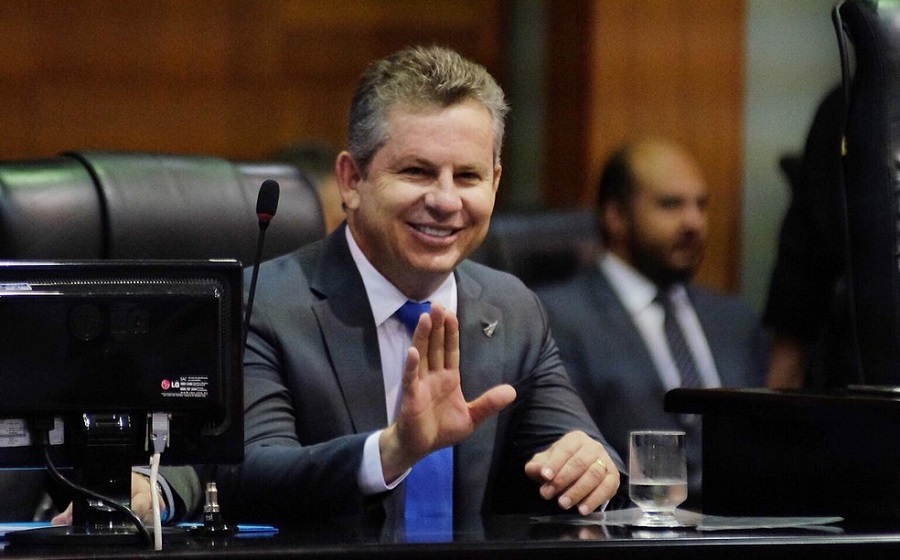RIO DE JANEIRO, BRAZIL – Responsible for over 70 million tons of grain production in the 2020/2021 harvest, Brazil’s State of Mato Grosso on Monday, July 19, announced a public call for tenders for the construction of the first railroad authorized by a Brazilian state by 2028.
Currently, virtually all railroads in Brazil operate under a concession regime, i.e., a private company takes over the operation and pays a fee to the federal government to operate the asset.
A state complementary law (685/2021) and a state decree (881/2021), both from March, prepared the ground for the state railroad which opens a new perspective in infrastructure investments in Brazil.

“It is an important step for us to leverage Mato Grosso and its potential,” governor Mauro Mendes said. “Despite adversities such as the distance from other major centers and the lack of infrastructure, the state has become competitive against national and world players in agribusiness. If even without the appropriate tools we were able to get this far, expectations with this expansion in the railway network are tremendous,” he stated.
Private model
Private companies have 45 days to present proposals for the construction of 730 kilometers of rail connecting the capital Cuiabá to the cities of Lucas do Rio Verde, Nova Mutum and Rondonópolis, where the largest grain terminal in Latin America operates. That is where Ferronorte will begin, which together with the São Paulo network will become the main export corridor for Mato Grosso agribusiness – and consequently, for Brazil – to the Port of Santos in Brazil’s southeast.
The expected investment amounts to R$12 (US$2.3) billion, at the operator’s own risk, which will have a period of 45 years to operate; it is a private operating model, with no public money contribution.
One of the requirements bidders must meet is to prove their economic and financial capacity to execute the work, with capital and net worth equivalent to at least 10% of the project’s value (R$1.2 billion). The criteria for winning the bid include the shortest time for the railroad’s implementation, greater handling capacity, and larger state territory coverage.
“The estimate, based on BNDES (National Bank for Economic and Social Development) calculations, is that 235,000 new jobs will be generated with the construction of the railroad, including direct, indirect, temporary, and income-effect jobs,” the governor said. “The reduction in the cost of transportation alone is a great leap in competitiveness, because rail freight in our state has been reduced by about 35% over the past five years.
A dream of decades
Although the schedule presented in the public notice provides that the works should begin six months after the environmental license is issued, with the terminals in Cuiabá and Lucas do Rio Verde completed by the second half of 2025 and 2028, respectively, the region’s municipalities responded to the call as if they could already hear the train whistle.
“A dream of decades will finally come off the drawing board and provide economic and sustainable development,” says Léo Bortolin, mayor of Primavera do Leste, with a population of about 80,000 and the seventh largest economy in Mato Grosso, with a per capita GDP 105% higher than the national average due to agribusiness. “With the railroad, we will indeed be Brazil’s Dubai.”
The euphoria surrounding the project makes sense in a state whose greatest wealth lies in grain production: its greatest challenge is to efficiently distribute this production. Mato Grosso is estimated to be producing 120 million tons per year by 2030.
“The advent of the train will encourage the establishment of new industries that will provide benefits in the verticalization of soy, corn and cotton production,” stated Leandro Félix, mayor of Nova Mutum, another production hub included in the future railroad’s route. “Our city is ahead of schedule with the creation of a technology park, which will include a research laboratory linked to diverse agribusiness chains.”
Railroad of industry and commerce
According to governor Mauro Mendes, the new railroad will not be restricted to agribusiness. “It will also be a railroad for industry and commerce, because it will connect with the railroad network carrying products to the main economic hubs in Brazil,” he says.
Currently there is heavy flow of industrial products and consumer goods transported in containers on the Rondonópolis-Santos corridor – including the so-called double-stack wagons, which allow up to three containers to be stacked on two levels. With the increased rail coverage, this flow tends to grow even further.
“The new railroad will greatly help us in product outflow, but it will be essential to bring inputs at a more competitive cost for our industrial production,” said Gustavo Oliveira, President of the Federation System of Industries of Mato Grosso (FIEMT).
“We have several industrial undertakings in the implementation stage, such as seven corn ethanol plants which need a competitive option for transportation. The railroad should also generate production growth effects in sectors such as vegetable and animal protein,” he said.
Source: Exame

